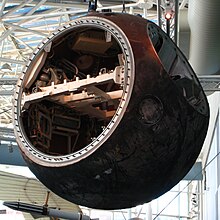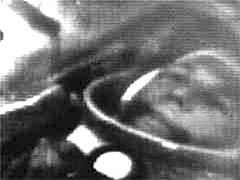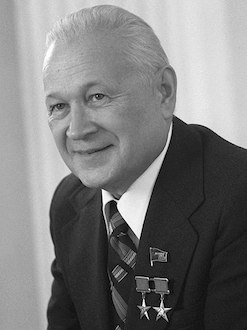This article's lead section may be too long for the length of the article.(October 2022) |

Space Flight Europe-America 500 was a goodwill mission conceived in 1992 as the first private, commercial spaceflight [1] by the Russian Foundation for Social Inventions and TsSKB-Progress, a Russian rocket-building company, to increase trade between Russia and USA and promote the use of technology once reserved only for military forces.
Contents
The idea of a space launch to be carried out in the International Space Year, the 500th anniversary of Columbus's arrival in the Americas, the 35th anniversary of the Earth's first artificial satellite launch, and the 35th Anniversary of the Treaty of Rome establishing the European Community belonged to Alexander Bazlov, a spacecraft designer, and was supported by Gennady Alferenko, the President of the Foundation for Social Inventions.
The effort was pulled off by the private sector, with the support of the governments from both countries. Money for the launch was raised from a collection of Russian companies who paid the military for the hardware.[ citation needed ]
Bob Walsh, an entrepreneur and humanitarian who helped bring the Goodwill Games to Seattle, heard of the plan while visiting Moscow in 1991 and agreed to sponsor it in the U.S. He worked with U.S. authorities to clear the way for the capsule recovery and delivery to Seattle, which had been a closed city to Russian ships since World War Two. [2]
On November 16, 1992, at 0:52 a.m. MSK, a Soyuz rocket fired an 8-foot-diameter (2.4 m), 5,152-pound spherical Resurs-500 capsule similar to the one flown by Cosmonaut Yuri Gagarin, from Russia's once-secret Plesetsk Cosmodrome.
The satellite orbited the Earth for seven days before parachuting into the Pacific Ocean about 120 miles off Grays Harbor on the Washington state coast on November 22 at 10:32 a.m. PST. The space capsule was scooped up and brought to Seattle by a 680-foot Russian missile-tracking ship Marshal Krylov.
The ship docked at 9 a.m. on November 24 at Pier 42 of the Port of Seattle, where it was met by government officials, including Mayor Norm Rice and Washington's Secretary of State Ralph Munro, school children, bands, and local residents as well as 330 Russian dignitaries, business leaders, scientists, journalists, and space officials, including Cosmonaut German Titov, the second Russian in space, who arrived in Seattle by charter flights.[ citation needed ]
Inside the capsule were 19 neon-orange containers with gifts, souvenirs, business products, artwork, religious icons, messages of peace also few hundred of bills of 1 rouble, the last one from the Soviet Union. Among other things, there were Russian Orthodox Church icons for the Saint Spiridon Orthodox Cathedral; Digswell the Space Dog, a stuffed toy based on a British cartoon character, a crystal sculpture of the Statue of Liberty; peace messages from the Dalai Lama, Russian President Boris Yeltsin, and leaders of European nations; a Christmas present for President Bill Clinton; and samples of Russian products. Also, there were two wedding rings from a Russian couple who got married at St. Spiridon Cathedral, after retrieving their rings from the capsule.[ citation needed ]
The space capsule was towed in the Bon Marche holiday parade and was set on display at the Museum of Flight at Boeing Field, where it has been residing ever since.
In the course of the event, a Russian-American Business Opportunity Conference was held at the Seattle Sheraton, and art and photo exhibits were on display. On Thanksgiving, Rotary Club members and church groups hosted the Krylov's 450 sailors and the 330 Russian visitors at their homes. Marshal Krylov, a previously top-secret vessel, was open to the public for several days. According to organizers, it was the first time anyone from the general public, including Russian civilians, had been allowed on board.















